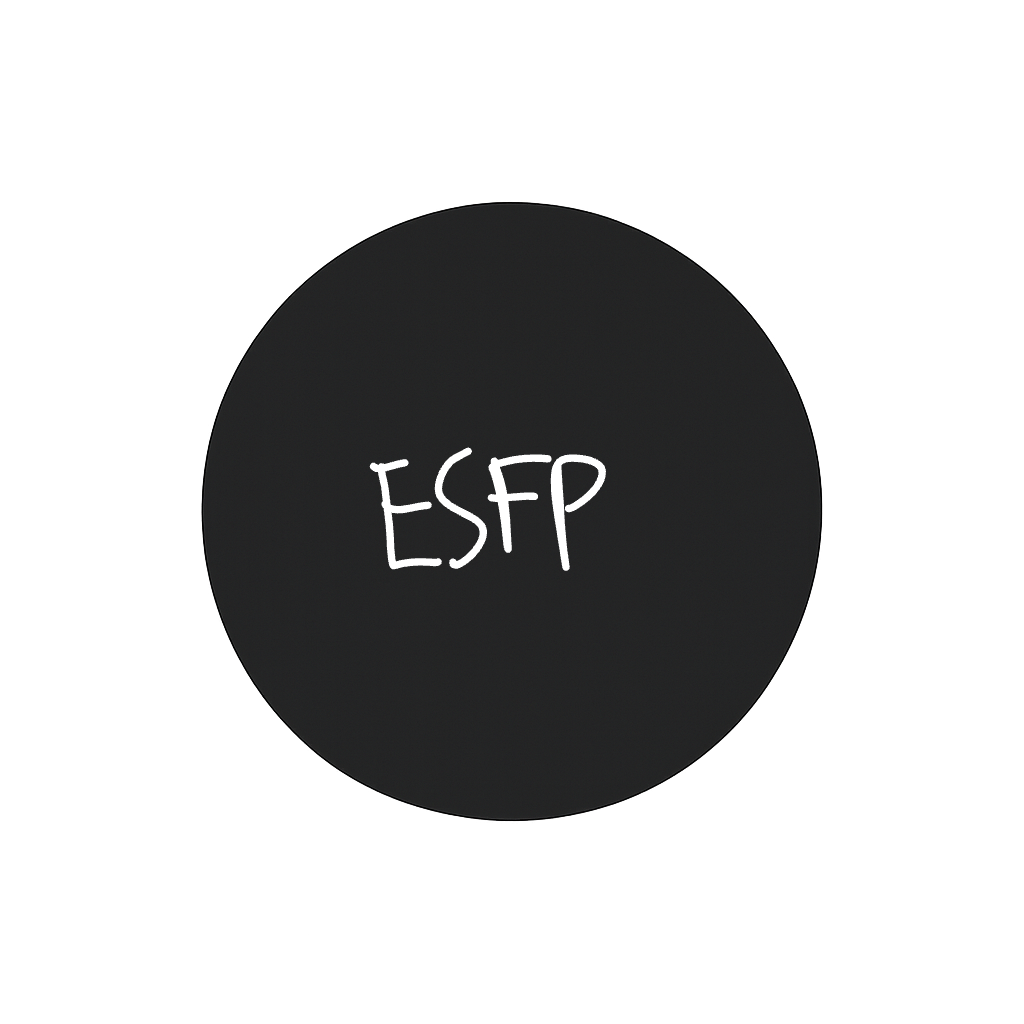The ESFP personality type, as defined by the Myers-Briggs Type Indicator (MBTI), is known for its enthusiasm, sociability, and adaptability. Understanding the interplay of its cognitive functions—Extraverted Sensing (Se), Introverted Feeling (Fi), Extraverted Thinking (Te), and Introverted Intuition (Ni)—provides valuable insights into how ESFPs perceive the world, make decisions, and interact with others. Below is a comprehensive breakdown of these functions individually and in combination.
ESFP Cognitive Functions Overview
Dominant Function: Extraverted Sensing (Se)
Role: Se is the primary lens through which ESFPs understand the world. It allows them to take in and respond to their immediate environment, making them highly aware of sensory details.
Characteristics: Action-oriented, observant, spontaneous, adaptable, and focused on the present moment.
Auxiliary Function: Introverted Feeling (Fi)
Role: Fi helps ESFPs evaluate experiences based on their personal values, providing them with a deep sense of authenticity.
Characteristics: Values-driven, empathetic, authentic, focused on personal integrity, and concerned with emotional depth.
Tertiary Function: Extraverted Thinking (Te)
Role: Te helps ESFPs organize their external environment, make decisions efficiently, and implement their ideas in a structured manner.
Characteristics: Logical, goal-oriented, decisive, structured, and focused on achieving results.
Inferior Function: Introverted Intuition (Ni)
Role: Ni allows ESFPs to consider future possibilities, see underlying patterns, and develop strategic insights.
Characteristics: Visionary, insightful, abstract, focused on future implications, and interested in exploring deeper meanings.
Interactions Between Cognitive Functions
Understanding how these functions interact can illuminate the complexities of the ESFP personality. Here’s a detailed look at each pairing and combination:
Se + Fi (Dominant + Auxiliary)
Synergy: This combination allows ESFPs to take in sensory information from their environment while staying true to their personal values. Se drives their focus on the present, while Fi helps them evaluate their experiences based on what feels right to them.
Application: ESFPs often use Se to engage fully with their environment and Fi to ensure their actions are aligned with their values, making them authentic and enthusiastic individuals.
Se + Te (Dominant + Tertiary)
Balancing Action with Structure: Se drives action and sensory engagement, while Te helps ESFPs bring structure and logic to their endeavors.
Application: ESFPs may use Te to organize their activities and make practical decisions, ensuring that their spontaneous actions are also effective in achieving their goals.
Fi + Ni (Auxiliary + Inferior)
Balancing Values with Insight: Fi drives personal value judgments, while Ni helps ESFPs see deeper patterns and consider future implications.
Application: Developing Ni can help ESFPs add a layer of strategic thinking to their value-driven pursuits, allowing them to plan more effectively for the future.
Se and Ni (Dominant and Inferior)
Balancing Present Focus with Future Vision: Se’s focus on the present can sometimes overshadow the need for strategic foresight emphasized by Ni.
Challenge: ESFPs may struggle to consider long-term consequences, leading them to act impulsively without fully considering future outcomes.
Growth Opportunity: Developing Ni can help ESFPs integrate their present focus with a sense of future direction, ensuring a more balanced approach to decision-making.
Te and Fi (Tertiary and Auxiliary)
Balancing Logic and Values: Te emphasizes efficiency and logic, while Fi ensures that decisions honor the ESFP’s internal values.
Application: ESFPs can navigate complex situations by balancing their logical approach with a sense of ethical integrity, allowing them to make decisions that are both effective and meaningful.
Practical Implications for ESFPs
Strengths
- Adaptable and Spontaneous: ESFPs excel at responding to immediate challenges and finding enjoyment in the present moment, making them resourceful and lively.
- Authentic Communication: Fi helps ESFPs connect with others in an authentic way, making them engaging and empathetic communicators.
- Action-Oriented: Se provides ESFPs with a strong focus on the present, allowing them to take swift action and make the most of opportunities.
- Logical Decision-Making: Te enables ESFPs to make decisions based on logic and efficiency, ensuring that their actions are both practical and impactful.
Challenges
- Difficulty with Long-Term Planning: Ni, being less developed, can make it challenging for ESFPs to consider future implications or develop long-term strategies.
- Impulsivity: Relying heavily on Se may lead ESFPs to act impulsively without fully considering the consequences of their actions.
- Balancing Logic and Values: Ensuring that decisions are both logically sound and aligned with personal values can sometimes be a delicate balance.
- Avoiding Shallow Engagement: Focusing too much on immediate experiences may cause ESFPs to overlook deeper meanings or long-term goals.
Growth Strategies
- Enhancing Ni: Engaging in activities that encourage introspection and long-term planning, such as journaling or strategic goal-setting, can help strengthen Ni.
- Developing Te: Practicing logical organization and planning can help ESFPs develop Te, aiding in more effective implementation of their ideas.
- Balancing Action with Reflection: Making a conscious effort to reflect on past experiences and future goals ensures a more holistic approach to decision-making.
- Managing Impulsivity: Learning to pause and consider potential consequences before taking action can help ESFPs make more informed decisions.
Conclusion
The ESFP’s cognitive functions—Se, Fi, Te, and Ni—work in a dynamic interplay that defines their unique approach to life. By leveraging the strengths of each function and addressing their inherent challenges, ESFPs can achieve personal growth, enhance their effectiveness, and make meaningful contributions to their pursuits. Understanding these dynamics not only aids ESFPs in self-awareness but also helps others appreciate the enthusiasm and adaptability of this lively personality type.
***
